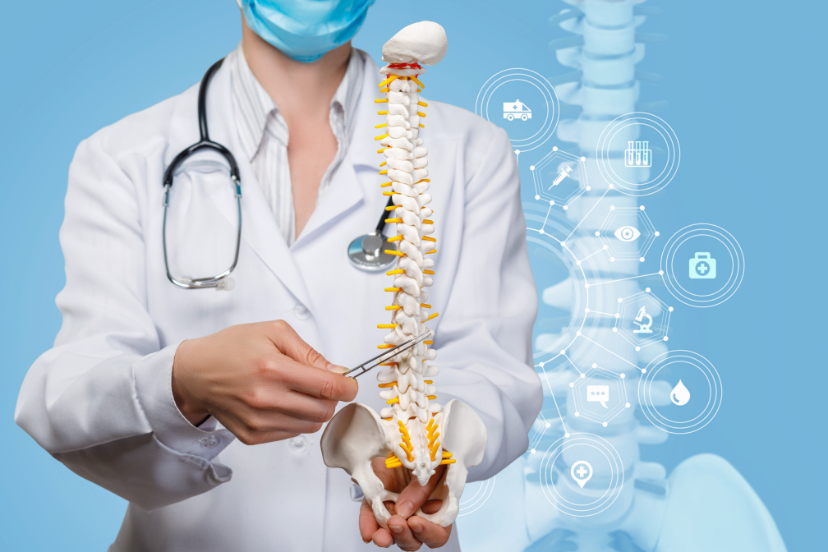Navigating Life’s Challenges with Osteoporosis of the Spine
Introduction
Living with osteoporosis of the spine can feel like traversing a rocky terrain filled with uncertainties. However, armed with knowledge and the right strategies, you can lead a fulfilling life despite the challenges posed by this condition. In this comprehensive guide, we delve into the nuances of living with osteoporosis of the spine, offering insights, practical tips, and answers to frequently asked questions.
Understanding the Condition
What is Osteoporosis of the Spine? Osteoporosis of the spine, also known as spinal osteoporosis, is a medical condition characterized by the weakening and deterioration of the bones in the spine. This weakening makes the spine more susceptible to fractures, leading to pain, decreased mobility, and potential complications.
How Does Osteoporosis Affect the Spine? Osteoporosis weakens the bones, causing them to become brittle and porous. In the spine, this can result in compression fractures, where the vertebrae collapse or become compressed due to minimal trauma or even normal activities like bending or lifting.
Symptoms of Osteoporosis of the Spine Living with osteoporosis of the spine often involves managing various symptoms, including:
- Persistent back pain, especially in the lower back
- Loss of height over time due to vertebral compression fractures
- Stooped posture or curvature of the spine (kyphosis)
- Limited mobility and flexibility
Practical Tips and Strategies: Lifestyle Modifications for Spinal Health
Maintaining a balanced diet is the cornerstone of spinal health. Your bones thrive on nutrients like calcium and vitamin D, essential for strength and resilience. Incorporate leafy greens, dairy products, and fortified foods into your meals to fortify your skeletal structure.
Regular exercise is a game-changer for your spine. Engage in weight-bearing activities such as walking, dancing, or strength training to boost bone density and muscle strength. Consult with your healthcare provider to tailor an exercise regimen that suits your needs and abilities.
Smoking and excessive alcohol consumption are detrimental to bone health. Stub out the cigarettes and limit alcohol intake to protect your spine from weakening and the heightened risk of fractures. Your future self will thank you for this healthy choice.
Proper Body Mechanics and Posture
Mastering proper lifting techniques is crucial to safeguarding your spine. Always remember to bend your knees, not your back, when lifting objects. Maintain a straight spine to minimize strain and avoid twisting movements, especially when handling heavy items.
Posture matters more than you think. Whether sitting, standing, or walking, strive for proper alignment to alleviate pressure on your spine. Invest in ergonomic furniture and pillows to support your back and maintain good posture throughout the day.
Fall Prevention
Creating a safe environment is paramount for preventing falls. Eliminate tripping hazards like loose rugs and cluttered pathways in your home. Install handrails and grab bars in critical areas such as bathrooms and staircases to provide stability and support.
Your choice of footwear can make or break fall prevention efforts. Opt for supportive shoes with non-slip soles to enhance stability, especially on slippery surfaces. Your feet are your foundation—ensure they’re well-equipped to keep you steady and secure.
Coping with Challenges: Emotional and Mental Well-being
Living with osteoporosis of the spine can take a toll on your emotional and mental well-being. It’s essential to prioritize self-care and seek support when needed. Here are some strategies to cope with the emotional challenges:
- Stay Connected: Maintain strong social connections with friends and family members who can offer support and companionship.
- Seek Professional Help: Don’t hesitate to reach out to a therapist or counselor to address any feelings of anxiety, depression, or stress.
- Practice Stress Management Techniques: Incorporate relaxation techniques such as deep breathing, meditation, or yoga into your daily routine to reduce stress and promote emotional resilience.
FAQs: Addressing Common Concerns
1. Can osteoporosis of the spine be reversed?
While osteoporosis of the spine cannot be reversed, lifestyle modifications, medications, and treatments can help slow down bone loss and reduce the risk of fractures.
2. What are the treatment options for osteoporosis of the spine?
Treatment options may include medications to strengthen bones, physical therapy to improve mobility and flexibility, and surgical interventions for severe fractures.
3. Is osteoporosis of the spine hereditary?
Genetics can play a role in osteoporosis risk. If you have a family history of osteoporosis or fractures, you may be at a higher risk of developing spinal osteoporosis.
4. How can I prevent osteoporosis of the spine?
You can reduce your risk of developing osteoporosis of the spine by adopting a healthy lifestyle, including a balanced diet, regular exercise, avoiding smoking and excessive alcohol consumption, and maintaining proper body mechanics.
5. What are the complications of untreated osteoporosis of the spine?
Untreated osteoporosis of the spine can lead to severe pain, loss of mobility, spinal deformities, and an increased risk of fractures, which can have significant implications for overall health and quality of life.
6. Can osteoporosis of the spine lead to paralysis?
While rare, severe spinal fractures associated with osteoporosis can potentially lead to spinal cord compression and neurological complications, including paralysis. Prompt medical intervention is essential to prevent such complications.
Conclusion
Living with osteoporosis of the spine presents unique challenges, but with the right knowledge, support, and strategies, you can lead a fulfilling and active life. By prioritizing spinal health, adopting healthy lifestyle habits, and seeking appropriate medical care, you can navigate the journey of living with osteoporosis of the spine with resilience and optimism. Remember, you are not alone on this journey—reach out to healthcare professionals, support groups, and loved ones for guidance and encouragement. Embrace each day with strength and determination, knowing that you have the power to overcome obstacles and thrive despite the challenges.




